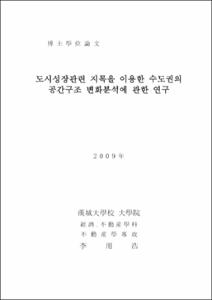도시성장관련 지목을 이용한 수도권의 공간구조 변화분석에 관한 연구
= An Analytical Study on the Spatial Structure Changes of Seoul Metropolitan Area by Using Urban Land Categories
- Files in This Item:
-
-
Download
 000000488371.pdf
기타 데이터 / 1.98 MB / Adobe PDF
000000488371.pdf
기타 데이터 / 1.98 MB / Adobe PDF
-
Items in Repository are protected by copyright, with all rights reserved, unless otherwise indicated.